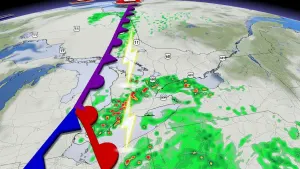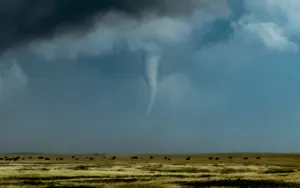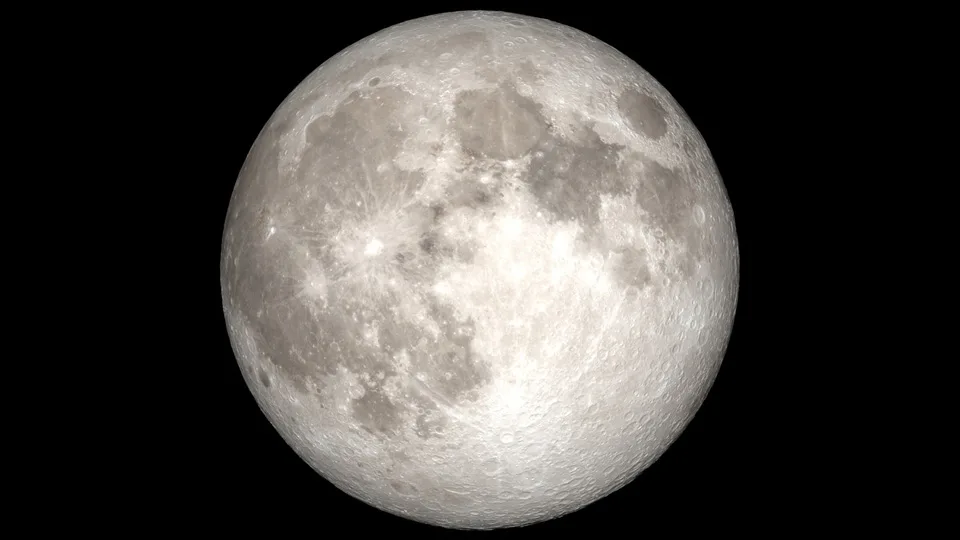
Watch Tuesday night for 2019's biggest, brightest Full Moon
Keep your eyes on the skies. Tuesday's Full Moon is the closest, biggest and brightest Full Moon of the entire year! Here's how to see it, and the other astronomical events in the sky this season.
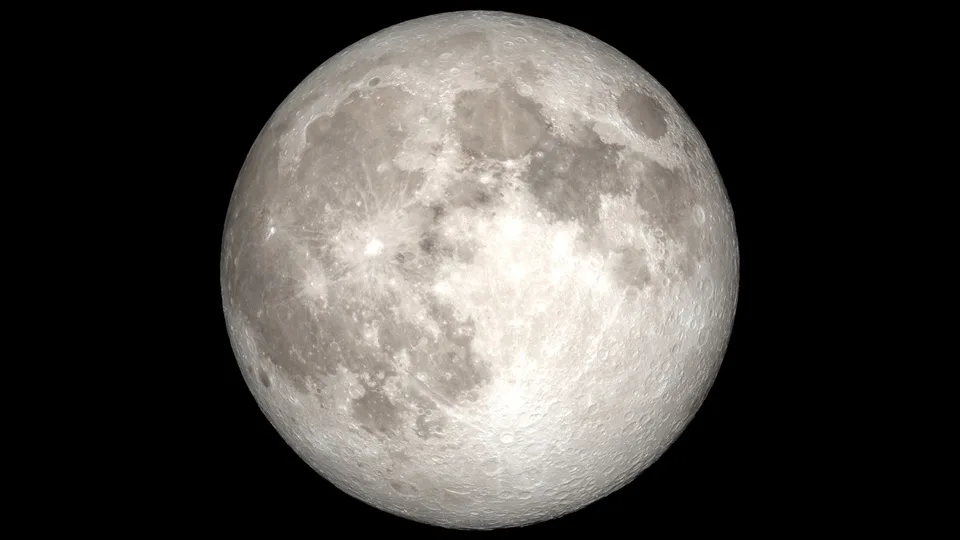
Winter may not be the easiest time of year to stargaze, but it can be the most rewarding. Here are the top skywatching events for Winter 2018-2019, and a few extras to keep your eye out for, as well.
Clear winter nights often present the best viewing, compared to other seasons, as the air overhead tends to be drier and more stable. Stars, planets and the Moon appear crisper and cleaner, as their light encounters less turbulence in the air before it reaches us. The drier air also reflects back less of the light pollution produced by our urban centres, so our skies tend to be darker, allowing us to see more stars, and more of the dimmer meteors during annual meteor showers.
So, stay warm when you head out to go skywatching this coming season, and don't miss these great events.
QUICK LIST
December 22 - Longest Full Moon of 2018
January 2-3 - Earth at perihelion
January 3-4 - Quadrantid meteor shower peaks
January 20-21 - 'Super Blood Wolf Moon' Total Lunar Eclipse
February 19-20 - Perigee Full Moon 2019
Planetary Conjunctions and Alignments (January 22 - February 27)
February 21 - Zodiacal Light after evening twilight, western sky for two weeks
March 20 - Equinox
WHAT'S COMING UP?
CONJUNCTIONS AND ALIGNMENTS
Look up into a clear sky on most nights of the year, and it's very likely that you'll spot the Moon, along with one or more planets (Venus, Mars, Jupiter and Saturn being the most notable), at least at some point during the night.
On certain nights of the year, these objects appear especially close together (at least from our point of view here on Earth), which astronomers refer to it as a 'conjunction', while on other nights, several of these bright objects can line up across the sky in an 'alignment'.
Here are the notable conjunctions and alignments for Winter 2019.
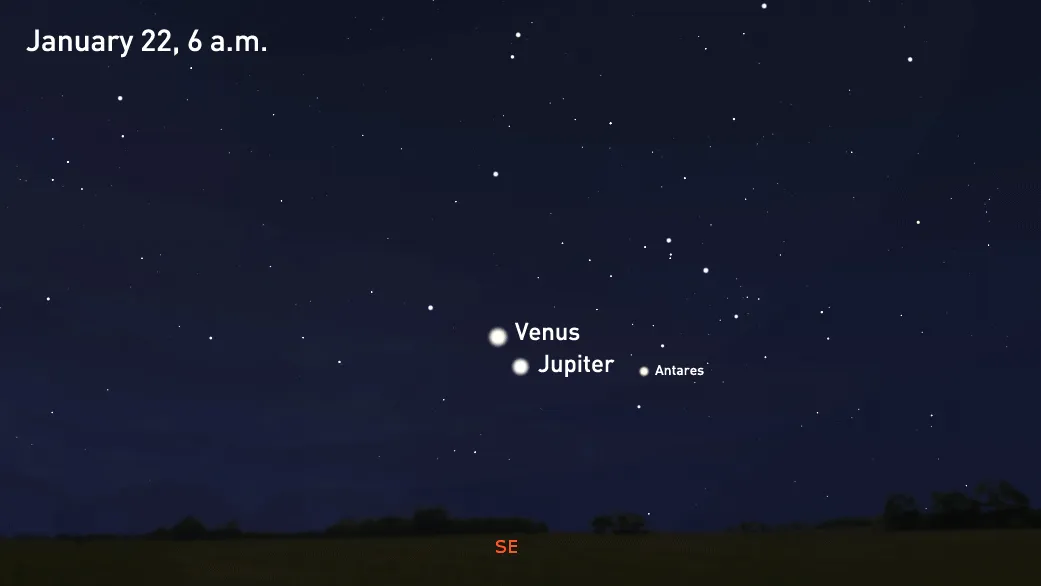
These Winter 2019 conjunctions and alignments are all in the early, pre-dawn morning. Credit: Stellarium/Scott Sutherland
January 22 and 23 - Venus-Jupiter conjunctions
January 31 - Venus-Moon-Jupiter alignment
February 18 - Venus-Saturn conjunction, with Jupiter nearby
February 27 - Jupiter-Moon conjunction, with Venus and Saturn nearby
February 28 - Venus-Saturn-Moon-Jupiter alignment
FEBRUARY 21 - THE ZODIACAL LIGHT
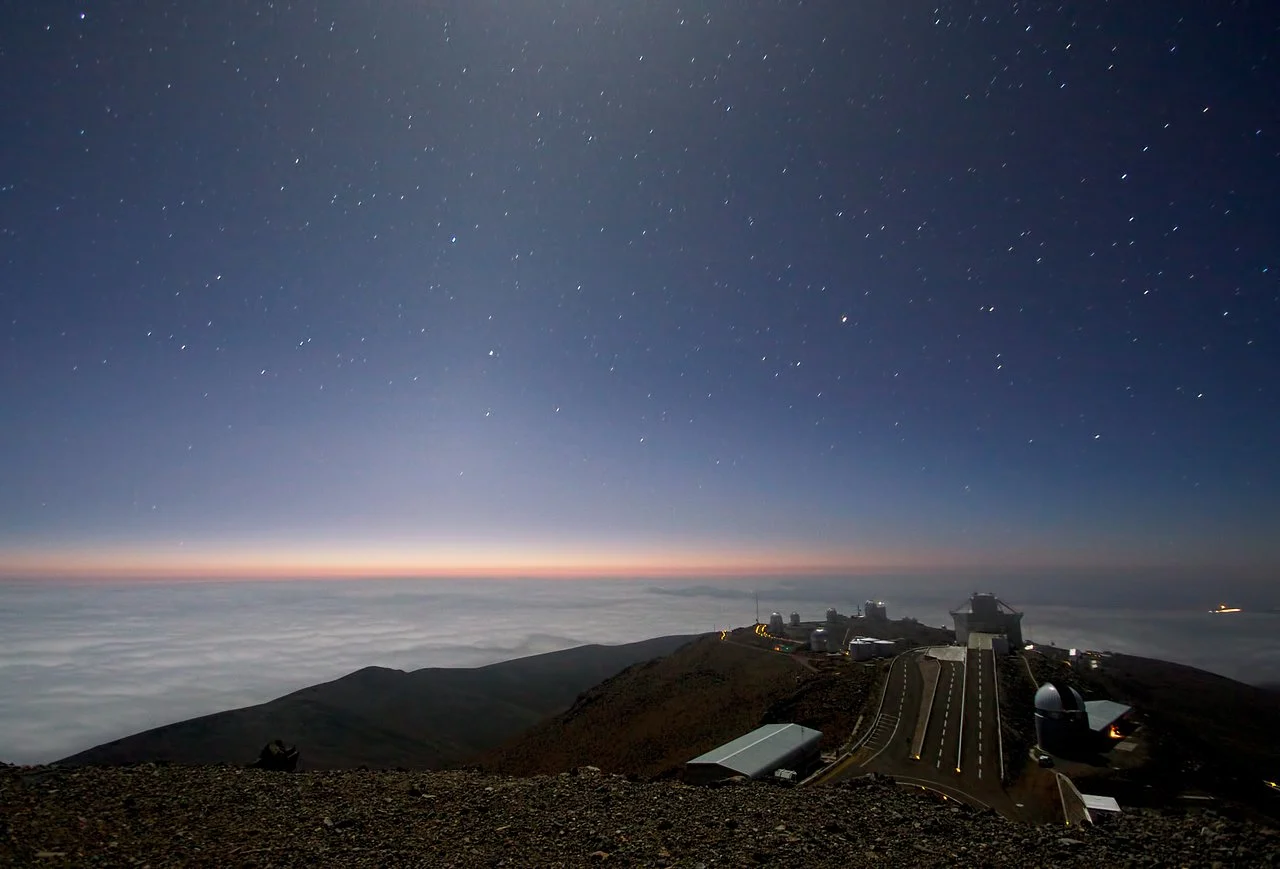
Moonlight and zodiacal light over La Silla. Credit: ESO
This winter, evening skywatchers will have a chance to see the immense cloud of interplanetary dust that encircles the Sun, which manifests in our night sky as a phenomenon known as "The Zodiacal Light".
In the Royal Astronomical Society of Canada's 2019 Observer's Handbook, Dr. Roy Bishop, Emeritus Professor of Physics from Acadia University, wrote: "The zodiacal light appears as a huge, softly radiant pyramid of white light with its base near the horizon, and its axis centred on the zodiac (or better, the ecliptic). In its brightest parts, it exceeds the luminance of the central Milky Way."
According to Dr. Bishop, event though this phenomenon can be quite bright, it can easily be spoiled by moonlight, haze or light pollution. Also, since it is best viewed just after twilight, the inexperienced sometimes confused it for twilight, and thus miss out.
On clear nights, and under dark skies, look to the western horizon, in the half an hour just after twilight has faded, from about February 21 to March 7.
MARCH 20 - EQUINOX
As our Earth travels in its orbit, the tilt of the planet causes the angle of the Sun to change in our sky.
From late September to late March, the North Pole is angled away from the Sun, so that the Sun is positioned more directly over the southern hemisphere, and the Sun reaches its lowest point in the northern sky (and highest in the southern sky) on or around December 22.
From late March to late September, conversely, the South Pole is angled away from the Sun, so that the Sun is positioned more directly over the northern hemisphere, reaching its highest point in the northern sky (and lowest in the southern sky) on or around June 22.
At the two points in between these periods - specifically around March 20 and September 22 - it appears to us as though the Sun crosses the equator. In March, it crosses from south to north, and in September, it crosses from north to south.
The exact moment that the Sun appears to be over the equator, in either case, is known as an Equinox.
Which hemisphere you're in, at the time, determines exactly which kind of equinox you're experiencing. In March, the northern hemisphere marks the vernal equinox, while the southern hemisphere marks the autumnal equinox. In September, it's the opposite.
The coming equinox, marking the start of spring in the north and autumn in the south, occurs at exactly 5:58 p.m. EDT, on March 20.
What's up for the rest of the year? There's plenty going on, but the biggest events coming up are the July southern hemisphere total solar eclipse, and the November transit of Mercury across the face of the Sun!
WHAT WE'VE ALREADY SEEN
DECEMBER 22 - LONGEST FULL MOON OF 2018
This year, December's Full Moon falls on the night of the 22nd, just one night after the longest night of the year.
On that night, the Moon will rise at 5 p.m. local time, and it will set at 8:32 a.m. on the morning of the 23rd, for a total Full Moon viewing time of 15 hours and 32 minutes!
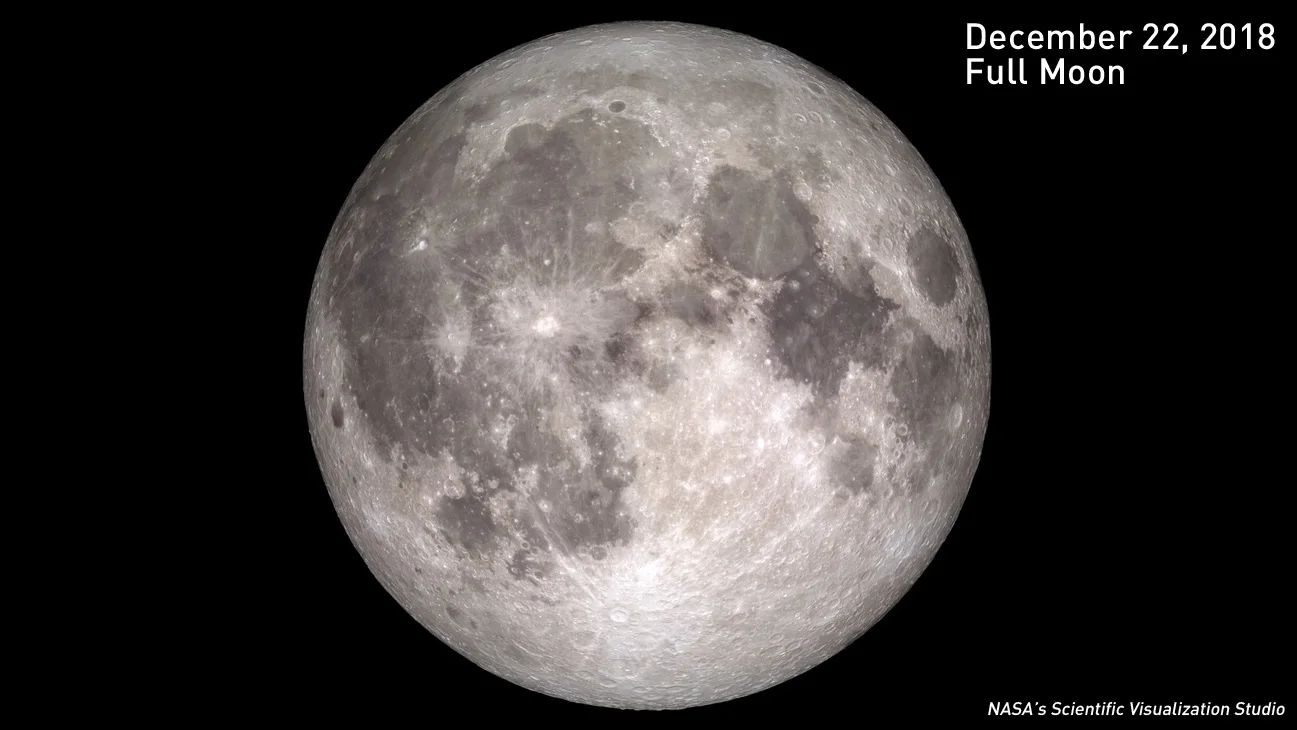
That's the longest Full Moon of the entire year!
We haven't seen a Full Moon last that long since December 2010 (when it was in the sky for 15 hours and 54 minutes on the 20th-21st)!
JANUARY 2-3 - EARTH AT PERIHELION
This event wasn't so much something to see, but simply to experience...
Each year, on or around January 3, Earth reaches what's known as perihelion - its closest distance to the Sun of the entire year.
If you wanted to mark the exact moment, even to pause for a short break for this, it occurred at exactly 05:20 UTC, on January 3.
1:50 a.m. Jan 3 Newfoundland Standard Time
1:20 a.m. Jan 3 Atlantic Standard Time
12:20 a.m. Jan 3 Eastern Standard Time
11:20 p.m. Jan 2 Central Standard Time
10:20 p.m. Jan 2 Mountain Standard Time
9:20 p.m. Jan 2 Pacific Standard Time
Would you have felt anything when this occurred? Not specifically from the astronomical event, but it was still pretty cool to mark the moment when it happened!
JANUARY 3-4 - QUADRANTID METEOR SHOWER PEAKS
The best of the winter meteor showers happens right after New Years - the Quadrantids.
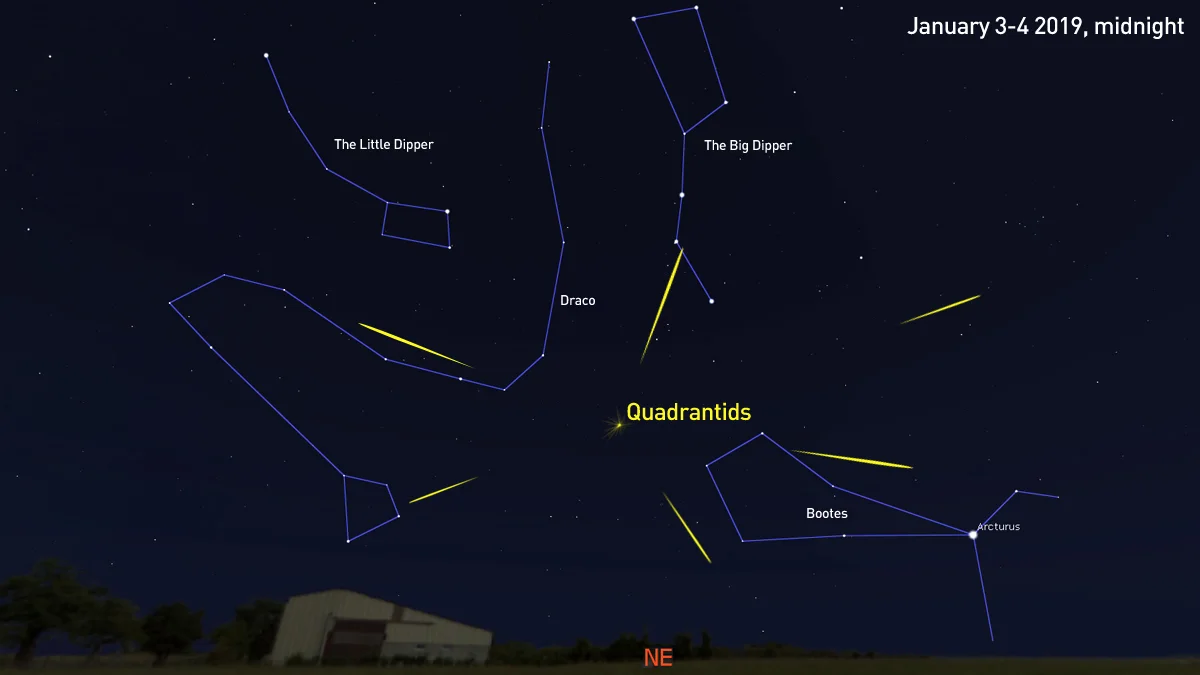
The location of the Quadrantid radiant, on the night of January 3-4, 2019. Credit: Stellarium/Scott Sutherland
Unlike 2018's Quadrantid shower, which was mostly washed out by the light from the nearly-Full Moon, this year's meteor shower happened while the Moon is just a thin sliver of a crescent, which slipped beyond the horizon before sunset on Thursday, and didn't rise again until just before dawn, Friday.
That meant we had a nice dark sky for the entire night, and observers had the best chance to catch even the faintest of meteors flashing through the sky during the January 3-4 peak of the shower.
The Quadrantids, which originate from an asteroid known as 2003 EH1 (possibly an 'extinct comet'), is one of only two known meteor showers to originate from a rocky body! The December Geminids is the other, originating from 'rock comet' asteroid 3200 Phaethon.
This meteor shower is capable of putting on excellent displays, delivering an average of 120 meteors per hour under absolutely ideal conditions (clear, dark and dry skies). This can vary year to year, from around 60 to close to 200, and includes all meteors, from the brightest to those too dim to be noticed by the human eye.
One complication for the Quadrantid meteor shower is its very sharp peak. Most other meteor showers have a peak that lasts all night, or possibly even over a few days. The peak of the Quadrantids typically lasts for only 4 hours. This year, just based on the timing of when Earth passes through the densest part of the Quadrantid meteoroid stream, that four-hour peak was centred around 2 UTC, or about 9 p.m. ET. That favoured European viewers, but that didn't mean we wouldn't see anything from here in North America.
The best bet for Canadian skywatchers was to head out just after sunset, and set up to watch for meteors in the earlier hours of the night, so as to hopefully catch the tail end of the peak. Viewers in the eastern half of the country were expected to be more successful, as the peak was likely to completely die down before the sun sets in the western half.
Strangely, the early morning hours actually looked to be some of the best for seeing meteors from this shower, despite the forecast. As the University of Toronto Scarborough all-sky cam was showing, from roughly 3 a.m. ET to 5 a.m. ET, there were several fireball meteors detected over the Toronto area.
It's likely that clouds simply obscured the sky earlier in the night, preventing the camera from recording more, however, it is somewhat unexpected that the shower actually lasted that long into the night. It just goes to show you that meteor showers can deliver some unexpected results!
HOW TO WATCH METEOR SHOWERS
First, some honest truth: Many people who want to watch a meteor shower end up missing out on the experience, unnecessarily. Since they haven't been told what they need to do, or what to expect, they typically step outside from the lighted interior of their house, look up into the night sky, and expect to immediately see meteors flashing by every few minutes. When they don't see that happening, they immediately go back inside, disappointed. So, to help avoid that disappointment, here is a basic guide on how to get the most out of these events.
__The three 'best practices' for watching meteor showers are: __
check the weather,
__get away from light pollution, and __
be patient.
Having clear skies is very important for meteor-spotting. Even a few hours of cloudy skies can ruin an attempt to see a meteor shower. So, be sure to check The Weather Network on TV, on our website, or from our app, and look for my articles on the Out of this World blog, just to be sure that you have the most up-to-date sky forecast.
Next, you need to get away from city light pollution. If you look up into the sky and the only bright lights you see are the Moon, maybe a planet or two, and passing airliners, your sky is just not dark enough for you to see are any meteors. It's possible you might catch a bright fireball, but there's no guarantee, and those are typically few and far in-between. So, get out of the city, and the farther away you can get, the better!
Watch below: What light pollution is doing to city views of the Milky Way
For most regions of Canada, getting out from under light pollution is simply a matter of driving outside of your city, town or village, until you can see a multitude of stars above your head. In some areas, though, especially in southwestern and central Ontario, and along the St Lawrence River, the concentration of light pollution is very high.
Getting far enough outside of one city to escape its light pollution, unfortunately, tends to put you under the light pollution of the next city over. In these areas, there are dark sky preserves, however a skywatcher's best bet for dark skies is usually to drive north, and seek out the various Ontario provincial parks or Quebec provincial parks. Even if you're confined to the parking lot, after hours, these are usually excellent locations from which to watch.
Sometimes, based on the timing, the Moon is also a source of light pollution, which washes out all but the brightest meteors. We can't get away from the Moon, so in these situations, we can just make do, as best we can.
Once you've verified you have clear skies, and you've gotten away from sources of light pollution, this is where having patience comes in.
For best viewing, it's crucial to give your eyes time to adapt to the dark. Typically, somewhere between 30-45 minutes of adjustment time is optimal. Just as a warning, if you skip this step, even if you follow the rest of the steps, above, you are going to miss out on a lot of the action.
During this adjustment time, avoid all bright sources of light. That includes overhead lights, car headlights and interior lights, and especially cellphone, tablet and computer screens. Any exposure to bright light during this period will cancel out some or all the progress you've made, forcing you to start over. Shield your eyes from light sources, and if you need to use your cellphone during this time, set the display to reduce the amount of blue light it gives off, and reduce the screen's brightness as much as possible. Also, it may be worth finding an app that puts your phone into 'night mode', which will shift the screen colours into the red end of the light spectrum, which has less of an impact on your nightvision.
You can certainly look up into the starry sky when you are letting your eyes adjust. You may even see a few brighter meteors as your eyes become accustomed to the dark. If the Moon is shining brightly in the sky, turn so that you have your back to it.
Now, once you're in a good dark place, under clear skies and your eyes are adapted to the dark, look straight up. The graphics presented for meteor showers often give a 'radiant' point on the field of stars, showing where the meteors appear to originate from, but meteors can flash through the sky anywhere above your head. So, if you focus only on the location of the radiant, you may miss many of the meteors, as they flash through the sky behind you, or beyond the edges of your peripheral vision.
Bring a chair to sit in, or lean back against the side of your car, and tilt your head back, so you can take in as much of the sky at once. Then, just wait for the meteors to show up.
SPECIAL NOTE: Sometimes, specific times will be mentioned for the peak of a meteor shower ("go out after 9pm" or the like). If this is the case, it nearly always refers to the reader's local time zone. Only for a shower with a very sharp peak that only lasts a few hours, like the Quadrantids, does the specific timing matter.
JANUARY 20-21 - TOTAL LUNAR ECLIPSE
Nearly a year after 2018's "Super Blue Moon Total Lunar Eclipse", we're going to see a "Super Blood Wolf Moon Total Lunar Eclipse"!

On the night of January 20-21, the Full Moon will pass through the northern half of Earth's shadow, producing a Total Lunar Eclipse. The graphic above shows the path of the Moon through Earth's penumbral and umbral shadows, and it details the timing of the eclipse, for various time-zones across Canada.
Unlike some of the recent lunar eclipses, though, this one will be visible - from start to finish - from all across Canada.
Why is it called a "Super Blood Wolf Moon" eclipse?
'Wolf Moon' is the name that almanac writers assigned to the first Full Moon of the year. It's often attributed to Native American folklore by these same almanacs, however, while various tribes did have names for each month's Full Moon, the almanac names are very likely made up. 'Blood Moon' obviously refers to the red colour of the Moon during a total lunar eclipse, but has connections to the biblical account of apocalypse in the Book of Revelations, and there's a rather dubious "blood moon prophecy" that Christian ministers were trying to scare people with a few years ago, when we had the 2014/2015 so-called tetrad of total lunar eclipses.
Also, since the Moon will be very near perigee (its closest distance to Earth), it will be larger and brighter than normal - a so-called 'Super Moon'. It sounds kind of science-y, but this really isn't based on astronomy. It's an astrological term, for a New or Full Moon that is within 90 per cent of its closest approach to Earth for that month. Basically, when either the New Moon or Full Moon is closer to Earth than 361,520 km, and on January 21, just after midnight, the Moon will be at a distance of 357,728 km.
So, there you have it. Super Blood Wolf Moon Total Lunar Eclipse. It's hokey, and it has nothing to do with science, but it's undoubtedly catchy.

Hope for clear skies for this event, since we won't have another Total Lunar Eclipse so nicely centred over North America (so that everyone in Canada has a chance to see it) until May of 2022!
FEBRUARY 19-20 - PERIGEE FULL MOON 2019
We typically see three 'supermoons' every year, but there's only one 'Perigee Full Moon' - the closest, biggest and brightest Full Moon of the entire year.

The February 19 Full Moon, and all the details about it. Credit: NASA's Scientific Visualization Studio
A fun note about the above image: in the schematic to the bottom left, if both the yellow and blue dots overlapped perfectly, we would have another Total Lunar Eclipse! The yellow dot represents the point of the lunar surface that is centred on the Sun, and the blue dot is the point on the surface that is centred on the Earth. Even the tiny offset between the two shows us just how narrow the margin is for having a lunar eclipse!
Sources: International Meteor Organization | Royal Astronomical Society of Canada








